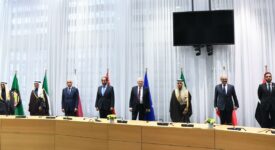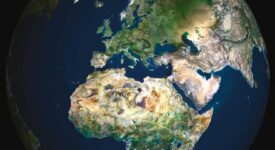About one third of the world’s tourists go on holiday in and around the Mediterranean Sea – for example, the region recorded over 350 million international tourist arrivals in 2019, or about 30% of all worldwide arrivals, and this number is even expected to reach 500 million by 2030. The group of 29 countries around the Mediterranean Sea is the world’s leading tourism destination in terms of both international and domestic tourism mainly thanks to its unique combination of a mild climate, exceptional natural resources including 46.000 kilometres of coastline, rich history, culture and heritage, and also its proximity to major source markets. The majority of arrivals are still to the comparatively mature advanced economy destinations in Europe, notably France, Spain, Italy, Greece and Portugal. But tourism is also a huge source of income and employment in each of the coastal North African and Middle Eastern countries. For the last two decades, the 11 countries of the Southern Mediterranean, including its most coveted tourist destinations Egypt, Israel, Jordan, Morocco, Tunisia and Turkey, have recorded the highest growth rates in inbound world tourism, with domestic tourism increasing rapidly too.
However, mass tourism also has a serious downside for the Mediterranean coast: it destroys ecosystems on land and in sea. Moreover, it also often excludes the local economy and puts pressure on local communities. Turning a town or a region into sustainable eco-tourism site poses some inherent risks, as one or more wrong decisions might result in a loss of income. These are the main regions why several communities have decided to work together in the framework of the Interreg MED cooperation, an initiative mainly funded by the European Union’s cohesion funds, whose main purpose is to exchange best practices and to learn from successes and failures. As a network comprising some 900 national, regional and private partners, Interreg MED’s overarching objective is to tackle the challenge of balancing the tourism economic returns with the protection of natural resources and population in what is one of the world‘s most famous touristic destinations. The 24 projects of the Interreg MED Sustainable Tourism community have pinpointed priorities and solutions in a set of policy recommendations for local and regional authorities to use. In 2020, the COVID-19 crisis has brought new opportunities – and challenges – yet to grasp.
The Interreg MED has, among other of its many activities, designed a manual on sustainable tourism that also helps local authorities to change their community from mass tourism to eco-friendly tourism, without losing (much) income. One example is turning protected areas into zones of sustainable tourism, with sveral zones in the Mediterranean having been selected for this kind of cooperation. One of them is the Wadi Rum area in Jordan, made famous by the movie Laurence of Arabia, which has had to deal with mass tourism that destroyed the site incrementally. Learning from other communities with protected areas in the Mediterranean, tourism in the Wadi Rum is now run by the local Bedouin community, with a clear interest in keeping the desert intact. The result of this sustainable tourism is not only that nature has been preserved, but it also helped to attract more value-seeking tourists, who, by spending a bit more, have also increased the income and employment of the local community. Jordan can thus serve as an example of how European cooperation can improve the European neighbourhood and how on its turn it can serve as a model for European communities. As Tatiana Fernandez, head of the Economic Promotion Area of Catalunya said during the last Interreg MED conference: “When we work together, the results are better”.
Article Tags:
COVID-19 · Egypt · Israel · Jordan · Mediterranean · Morocco · Tourism · Tunisia · Turkey · Wadi RumArticle Categories:
EURO-MAGHREB AGENDA






